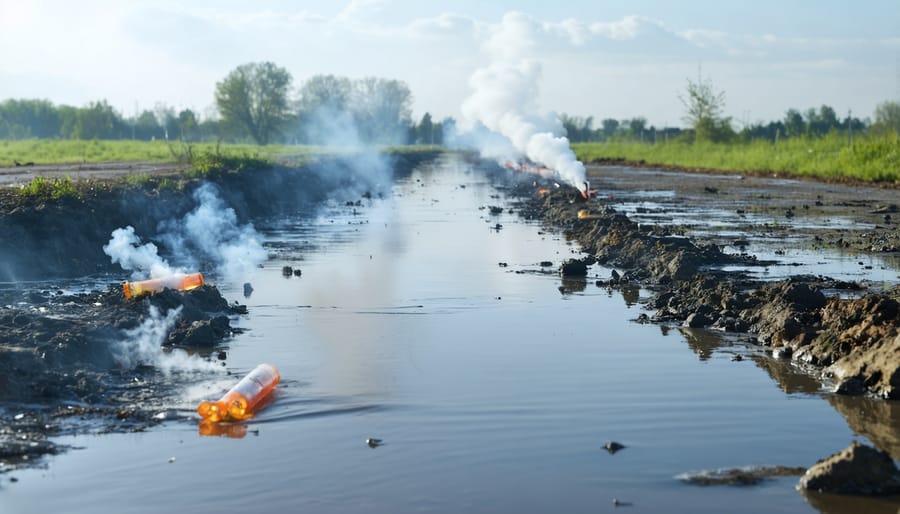Reduce vaping waste by responsibly disposing of e-cigarette components and recycling vape cartridges and batteries at designated facilities. Learn how to customize your vape juice to minimize packaging waste and support companies that align with eco-friendly practices. Encourage policymakers to enforce strict regulations on disposable e-cigarette packaging and promote sustainable alternatives. Engage with Indigenous communities to understand and integrate traditional ecological knowledge in combating vaping-related pollution. Celebrate legal victories through legislation like banning plastic vape pods, which set a precedent for environmental protection.
Understanding Vaping Waste
Components of Vaping Waste
Vaping devices, often hailed as an alternative to traditional smoking, carry their own environmental toll through the waste they generate. A significant issue stems from the plastic components of vape pens and e-cigarettes, which are often non-biodegradable and contribute to the growing plastic pollution crisis. These discarded devices often find their way to landfills and waterways, persisting for years and disrupting ecosystems. Moreover, many vaping devices contain hazardous materials such as lithium-ion batteries and heavy metals like lead and mercury. These components pose serious environmental risks, as they can leach toxic substances into the soil and water, impacting wildlife and human health.
Addressing this issue requires informed action and collaboration. Efforts are underway involving Indigenous communities and environmental activists who have shared invaluable knowledge and legal strategies. Through such partnerships, there have been significant strides in creating recycling programs and advocating for stricter regulations on vaping waste management to safeguard Canada’s natural heritage for future generations.

E-cigarette Disposal
In Canada, the disposal of e-cigarettes and their components poses a significant environmental challenge due to inadequate practices. E-cigarettes contain plastics, metals, and hazardous materials that can leach into landfills, leading to soil and water contamination. Despite the growing use of vaping devices, disposal regulations remain sparse, leaving much of the responsibility to individual users. Currently, there is a lack of comprehensive recycling programs, which often results in these devices being discarded improperly. Efforts are underway to address these gaps, with Indigenous communities leading initiatives that emphasize sustainable practices and the importance of preserving natural resources. The collaboration between policymakers and these communities aims to develop effective waste management solutions that uphold environmental justice and protect ecosystems. This cooperative approach highlights the need for integrative solutions that consider both ecological and cultural perspectives, ensuring a healthier environment for future generations.
Impact on Canadian Ecosystems
Pollution of Waterways
The rise of vaping in Canada has introduced a new environmental challenge: the pollution of waterways with vaping waste. Discarded vape cartridges and e-liquid containers often end up in our rivers and lakes, leaching harmful substances like nicotine, heavy metals, and residual chemicals into the water. These contaminants pose significant risks to aquatic ecosystems and wildlife, disrupting habitats and harming species that are vital to Indigenous communities who rely on these resources for cultural and subsistence purposes.
Efforts to mitigate this impact are gaining momentum. Indigenous-led initiatives are pioneering sustainable waste management practices, promoting stewardship and responsibility for the waterways. Legal professionals and activists are also working tirelessly to advocate for stronger regulations on vaping product disposal. Recent legal victories have set precedents, holding companies accountable for preventing their waste from reaching natural water bodies. By fostering collaboration among policymakers, Indigenous communities, and environmental organizations, Canada is taking crucial steps toward protecting its cherished waterways from the burgeoning threat of vaping waste.

Threat to Wildlife
Vaping-related waste poses a significant threat to wildlife and their habitats in Canada, introducing new pollutants that affect both land and aquatic ecosystems. The discarded plastic cartridges, batteries, and metal components from e-cigarettes contribute to environmental degradation. Animals often mistake this debris for food, leading to ingestion that can cause internal injuries or death. Moreover, these materials can leach harmful chemicals into the soil and waterways, further disturbing the balance of local ecosystems. This impact on wildlife underscores the urgent need for comprehensive waste management strategies. Collaborative efforts with Indigenous communities, who have long stewarded Canada’s natural resources, are proving pivotal. Legal victories have emerged, focusing on holding manufacturers accountable and promoting sustainable disposal practices. By recognizing these challenges and supporting policy changes, Canadians can empower efforts to safeguard the country’s diverse wildlife against the encroaching threats of vaping-related pollutants.
Legal and Policy Responses
Current Policies
In Canada, the growing concern over the environmental impact of vaping has led to a series of regulatory measures focused on waste management and disposal. The government has introduced policies that mandate proper disposal of vaping products, aiming to reduce their ecological footprint. This includes guidelines for recycling and disposing of e-cigarette cartridges and batteries, which contain toxic substances potentially harmful to wildlife and ecosystems protected under the Species at Risk Act. In collaboration with Indigenous communities, efforts are underway to develop sustainable waste management practices that respect traditional ecological knowledge. Legal victories have been seen in provinces like British Columbia, where local initiatives enforce stricter controls on vaping-related litter and pollution. These policies are part of a broader strategy to combat environmental injustices, promoting a cleaner and healthier Canada for all communities. As consumers become more aware, these changes empower them to participate actively in environmental protection.
Opportunities for Improvement
In Canada, while some initiatives have addressed the environmental impact of vaping, significant gaps remain that require attention. Current regulations often focus on the health implications of vaping, leaving the environmental consequences, such as e-waste from disposable vape cartridges and non-recyclable packaging, inadequately addressed. This shortfall presents an opportunity for comprehensive policy reform. Implementing stricter regulations on e-waste disposal and encouraging manufacturers to adopt eco-friendly practices, like biodegradable materials, are essential steps forward.
Moreover, legal reforms that include Indigenous perspectives are crucial. Collaborating with Indigenous communities can bring traditional ecological knowledge into the fold, fostering more holistic and sustainable solutions. Legal professionals and policymakers play a vital role in advocating for these changes, ensuring that laws evolve to protect not just the health of Canadians, but their environment as well. By learning from past legal victories in environmental protection, the path towards a cleaner, more sustainable vaping industry becomes clearer. These efforts promise not only environmental benefits but also a unified, empowered movement towards environmental justice in Canada.
Collaborative Efforts for Change

Indigenous Perspectives
Collaborating with Indigenous communities has led to impactful solutions in addressing vaping waste in Canada. These partnerships honor traditional ecological knowledge and embrace a holistic approach to environmental stewardship. For instance, a collaboration between the First Nations and environmental organizations has successfully launched a vaping waste collection and recycling program. This initiative not only reduces pollution but also creates job opportunities within these communities, fostering economic sustainability while preserving natural resources. Legal victories have reinforced the significance of Indigenous custodianship in environmental matters, illustrating a commitment to upholding Indigenous rights and responsibilities in ecological preservation. Such collective efforts serve as powerful examples of bridging modern environmental practices with ancestral wisdom to protect Canada’s natural landscape against the rising threat of vaping waste.
Legal Victories
One notable case in Canada, demonstrating successful legal advocacy in mitigating the environmental impacts of vaping, involved the collaborative efforts between local governments, environmental groups, and Indigenous communities. This coalition filed a lawsuit against a major vaping manufacturer, demanding accountability for the improper disposal of vaping products that were polluting waterways and harming wildlife. The lawsuit resulted in a landmark victory, with the company agreeing to fund a comprehensive recycling program and support environmental education initiatives in affected areas, including Indigenous territories.
This case set a precedent, empowering other communities to pursue similar legal action. By emphasizing joint efforts and respecting Indigenous perspectives, it highlighted the crucial role that collaboration plays in achieving environmental justice. The success of these initiatives is inspiring more endeavors geared towards tackling the ecological consequences of vaping, showcasing the power of unified legal action.
Steps Forward for Environmental Justice
To advance environmental justice concerning vaping waste in Canada, a concerted effort involving individuals, corporations, and government bodies is essential. Individuals can make a difference by properly disposing of vaping products and supporting brands that prioritize sustainable packaging. Engaging in community clean-up initiatives and advocating for local waste management solutions are also vital actions.
Corporations are encouraged to take responsibility by designing products with biodegradable materials and offering recycling programs. Companies can collaborate with environmental organizations and Indigenous communities to innovate sustainable solutions. By integrating traditional ecological knowledge, these partnerships can serve as models for meaningful environmental progress.
Government bodies play a crucial role in establishing comprehensive regulations to mitigate vaping waste. Implementing extended producer responsibility (EPR) policies can ensure manufacturers are accountable for the entire lifecycle of their products. Legal professionals and activists can push for these policies by highlighting successful case studies where legal measures have led to reduced environmental harm.
Collaboration with Indigenous communities is an integral part of these steps forward. By incorporating traditional practices and perspectives, we can enhance our efforts to protect and preserve the environment. Together, these actions can pave the way for a cleaner, more equitable future where the impacts of vaping waste are effectively managed, promoting true environmental justice for all Canadians.

